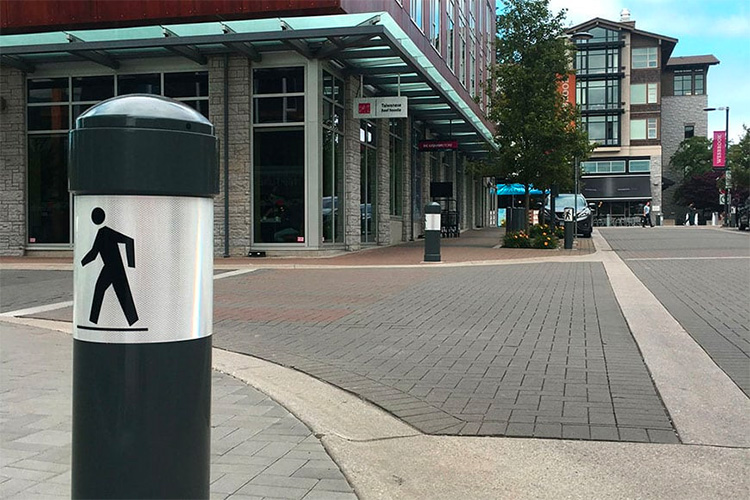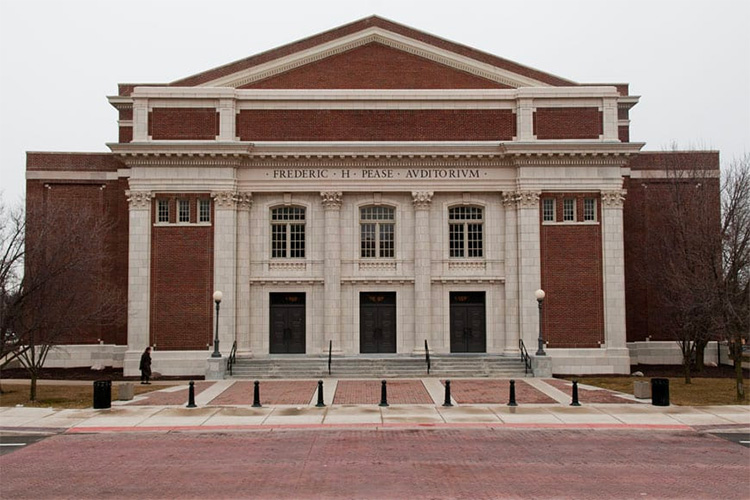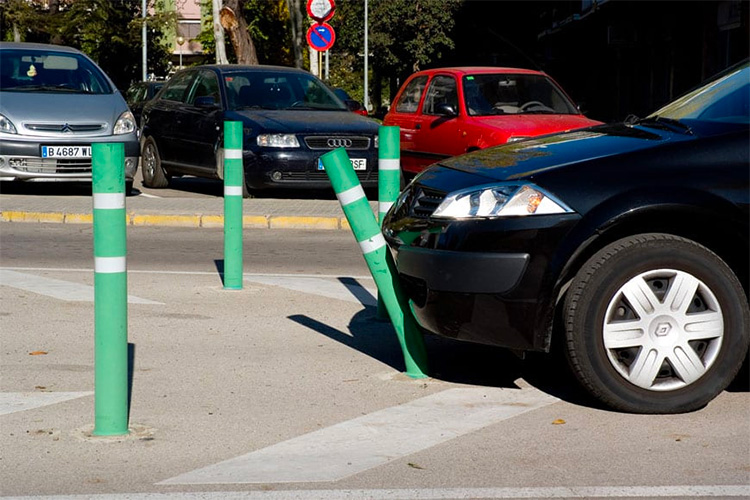Bollards for Campus Safety: A strategy for successful traffic management
February 17, 2021

Universities and colleges often provide safety around amenities like a small city might offer.
Colleges and universities often function like small towns. University planners oversee construction of many of the same facilities and amenities found in typical cities. Along with learning centers and student living quarters, post-secondary institutions now increasingly include shops, banks, restaurants, pubs, large sports venues, and business offices. Creating campus safety means integrating these into the ebb and tide of students that surge through a busy campus. This can represent an increased strain on institutional infrastructure, as colleges and universities must plan for high levels of both pedestrian and non-motorized traffic, buses, and a larger-than-average proportion of young drivers on the road. These demands make traffic safety on campus both uniquely challenging and of critical importance.

Colleges often have classical architecture that suggests tradition and legacy.
One unobtrusive strategy to allow pedestrian and non-motorized traffic to pass easily, while preventing vehicle incursion into protected areas, is the use of bollards. These bollards can be sourced to complement the architecture. They can even be used to provide other amenities, like bike parking or solar lighting. The addition of a few small bollards can make an oversized impact to the safety and security of a campus.
BOLLARDS DEFINED
Bollards are short posts, usually 36-52″ high. They are used as protective barriers, to give demarcation to an area, or to control the traffic flow of vehicles and pedestrians. Colleges can use them to communicate expectation without cluttering up the landscape with signs or solid barriers.
Because the needs of each campus are unique, there are a variety of bollards available. The type of bollard chosen will be dictated by its intended role in the institution’s architectural design.
TRAFFIC BOLLARDS
Bollards can manage both vehicular and pedestrian traffic. They are an efficient means of communicating the expected route for people, bicycles, cars, and trucks to take.
On pathways and around landscape features
Bollards can be used around gardens, along pathways, or on the edge of lawns to let people know the best places to walk, without preventing access the way a wall or fence would. In icy climates, a line of bollards can delineate a pathway out from the possible slide of snow or ice from the roof. A line of bollards with chains near a blind corner might encourage people to cross at a designated walk. Large institutions often take a great deal of care in selecting outdoor artworks; bollards can be used as a visually unobtrusive way to rope them off. Solar bollards can provide path-level lighting through a dark stretch at night. Bollards are often thought of as a guide for vehicle traffic, but they can be equally effective as a guide to foot traffic.

These weighty, durable flexible bollards help drivers stay in the correct lane.
@reliancefoundry #reliancefoundry #bollards
Company:  Reliance Foundry Co. Ltd.
Reliance Foundry Co. Ltd.
Product: Bollards > Collapsible, Fold-Down
Source: https://www.reliance-foundry.com/blog/campus-safety-traffic
Tags:
Bollards
Decorative Concrete: From Buildings to Bollards - Whether Béton brut, smooth and polished, or glossy aggregate, concrete can be beautiful (December 11, 2020)

